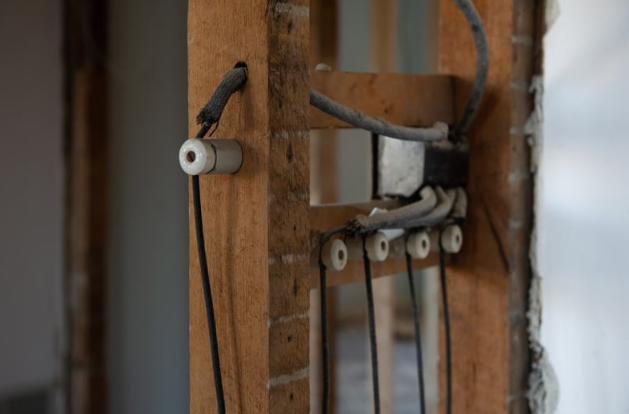You rely on electricity to power your favorite devices, but did you know that the type of wiring in your home can pose a significant fire hazard? Older homes may have outdated wiring systems that are no longer safe or up to code, potentially increasing your insurance premiums or even making it difficult to obtain coverage.
Understanding Different Wiring Types
- Knob and Tube Wiring:
- Characterized by individual wires running through porcelain knobs and tubes attached to the wall studs.
- You may be able to identify it by taking off electrical plate outlets
- Lacks a grounding conductor, increasing the risk of electrical shocks.
- Commonly found in homes built before 1950.
- Prone to overheating, arcing, and short circuits.
- Can become brittle and sag over time.
- Modifications can increase the risk of fire.

- Aluminum Wiring:
- Widely used in homes built between the 1960s and 1970s.
- Tends to oxidize and corrode at connections, increasing the risk of loose connections and overheating.
- Can melt the insulation and the connected fixture, leading to fire.
- The U.S. Consumer Product Safety Commission (CPSC) estimates that homes with aluminum wiring installed before 1972 are 55 times more likely to experience a fire hazard.

- Copper Wiring:
- Considered the safest and most reliable type of wiring for modern homes.
- Durable, flexible, and has excellent conductivity.
- Meets current electrical codes and safety standards.
Which Wiring Types Are Insurance-Friendly?
Copper wiring is generally preferred by insurance companies. Older wiring systems, such as knob and tube or aluminum, may:
- Result in higher insurance premiums.
- Make it difficult to obtain insurance coverage.
How to Determine Your Home’s Wiring Type
- Check the age of your home: Homes built before 1950 are more likely to have knob and tube wiring. Homes built between the 1960s and 1970s may have aluminum wiring.
- Consult an electrician: A qualified electrician can perform a thorough inspection to determine the type of wiring in your home and assess its condition.
- Look for exposed wiring: If any wiring is exposed, you can visually inspect the color. Aluminum wiring is typically silver, while copper wiring is a distinct yellow color. Important Note: Never attempt to inspect or touch exposed wiring yourself.
Mitigating Risks Associated with Aluminum Wiring
There are two primary methods for addressing the risks of aluminum wiring:
- Replacement: Complete removal of all aluminum wiring and installation of new copper wiring. This is a major renovation project.
- Pigtailing: A less invasive approach that involves splicing copper pigtails to the aluminum wiring at connections, improving conductivity and reducing the risk of overheating.
- Pigtailing is generally more cost-effective than complete replacement.
Conclusion
Understanding the type of wiring in your home is crucial for safety and insurance purposes. If you suspect that your home has outdated or unsafe wiring, consult with a qualified electrician to assess the situation and recommend appropriate solutions.
